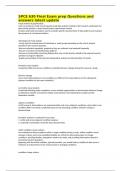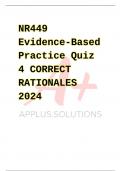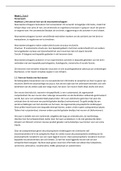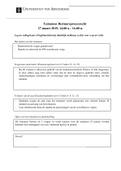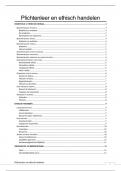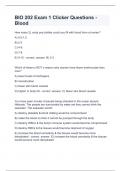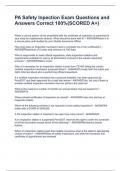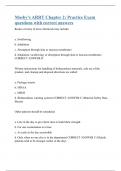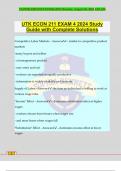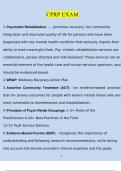Tentamen (uitwerkingen)
SPCE 630 Final Exam prep Questions and answers latest update
- Vak
- Instelling
SPCE 630 Final Exam prep Questions and answers latest update visual analysis of graphed data is the cornerstone of and most frequently used data analysis method in SCD research, particularly for determining whether a study demonstrates experimental control. involves systematic procedures used to...
[Meer zien]
